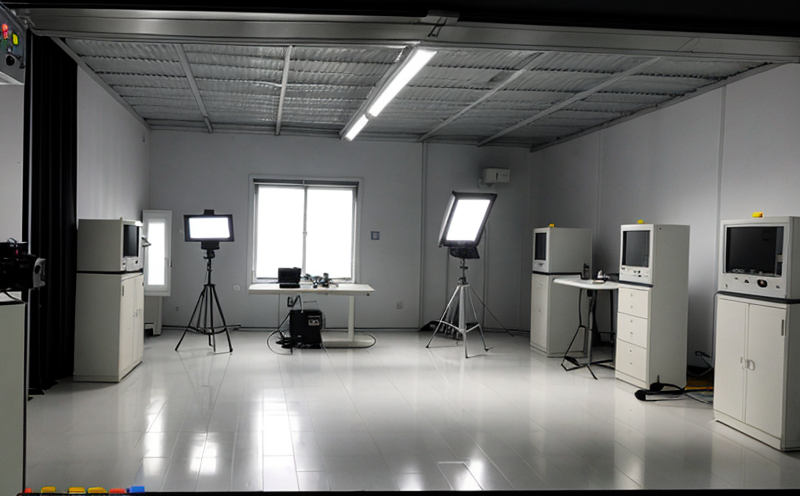IEC 60598 Photometric Testing of General Purpose Luminaires
The International Electrotechnical Commission (IEC) standard IEC 60598 provides a comprehensive framework for the specification, testing, and certification of general purpose luminaires. This stringent international standard ensures that all products meet essential safety requirements, performance criteria, and quality standards across different markets. The photometric testing aspect of this standard is crucial as it evaluates how light sources perform in terms of their illumination distribution, color rendering index (CRI), and other critical parameters.
Photometric testing involves measuring the luminous flux, luminance, and intensity distribution of a luminaire over its entire surface. This process requires precise instrumentation to capture data accurately at various angles around the luminaire. The resulting photometric data is essential for evaluating compliance with IEC 60598. Compliance ensures that the luminaire will function as intended in its intended environment without posing risks associated with poor design or manufacturing.
For quality assurance, laboratories must use calibrated instruments and follow strict protocols to ensure accurate measurement. This includes controlling environmental factors such as temperature, humidity, and spectral conditions that could affect the test results. The photometric testing process typically involves setting up the luminaire in a dark room with controlled lighting, aligning it according to standard angles, and recording its performance at multiple points.
The IEC 60598 standard specifies detailed acceptance criteria for various parameters of general purpose luminaires. These include light output, color rendering index (CRI), uniformity indices, and other metrics that assess the luminaire's performance in real-world applications. Compliance with these standards is critical for ensuring consistent product quality across different production batches.
Lighting design professionals rely on accurate photometric testing results to select appropriate luminaires for specific lighting designs. For instance, designers may need to choose luminaires that provide adequate illumination levels and color rendering capabilities in retail environments or healthcare facilities. Proper photometric testing ensures that the chosen luminaire meets these requirements while also complying with relevant international safety standards.
Manufacturers benefit from thorough photometric testing by identifying potential issues early in the development process, which can lead to improved product quality and reduced costs associated with rework or recalls. Additionally, compliance with IEC 60598 enhances brand reputation by demonstrating commitment to high-quality manufacturing practices.
- Accurate measurement of luminous flux
- Evaluation of color rendering index (CRI)
- Assessment of uniformity indices
- Determination of compliance with international standards
The testing process also helps identify any discrepancies between the actual performance of the luminaire and its expected specifications. This allows manufacturers to make necessary adjustments before final production, ensuring consistent quality across all units.
Compliance with IEC 60598 is essential for businesses operating in international markets where stringent safety regulations apply. By adhering to these standards, companies can ensure that their products meet the highest level of quality and reliability expectations set by regulatory bodies worldwide.
Industry Applications
The IEC 60598 standard is widely applicable across various industries where general purpose luminaires are used. Some key sectors include:
- Retail and commercial environments
- Hospitality and hotel facilities
- Public spaces such as parks, streets, and walkways
- Offices and educational institutions
In retail settings, proper lighting can significantly impact customer experience. High-quality photometric testing ensures that stores have adequate illumination levels to enhance visibility while maintaining energy efficiency through precise control over light distribution.
In hospitality establishments, consistent color rendering is crucial for creating an inviting atmosphere. Photometric testing helps maintain this consistency by verifying that the chosen luminaires meet both aesthetic and functional requirements.
Public spaces benefit from well-designed lighting systems that provide safety and security while minimizing light pollution. Thorough photometric testing ensures these goals are achieved effectively without compromising on energy savings.
Offices and educational institutions require sufficient illumination for productivity and learning outcomes. Accurate photometric testing guarantees that the selected luminaires deliver optimal results under all conditions, contributing to improved efficiency and comfort levels within such environments.
Quality and Reliability Assurance
Photometric testing plays a vital role in ensuring product quality and reliability by providing accurate measurements of luminaire performance. This section outlines key aspects involved in this process:
- Laboratory equipment calibration: Ensuring that all instruments used during the test are properly calibrated according to international standards.
- Environmental controls: Maintaining stable environmental conditions such as temperature and humidity to prevent variations in measurement results.
- Data recording: Capturing detailed photometric data at multiple angles around the luminaire for comprehensive evaluation.
- Comparison with specifications: Comparing measured values against expected performance metrics outlined in IEC 60598.
By adhering to these practices, laboratories can provide reliable test results that contribute positively towards maintaining consistent quality throughout manufacturing processes. Properly conducted photometric testing helps identify any deviations from specified parameters early on, allowing manufacturers to address issues promptly and maintain compliance with relevant standards.
Customer Impact and Satisfaction
The impact of thorough photometric testing extends beyond just meeting regulatory requirements; it directly influences customer satisfaction by delivering products that perform as intended. Here are several ways in which this impacts customers:
- Better visual comfort: Properly designed luminaires reduce eye strain and discomfort, leading to improved user experience.
- Enhanced safety: Well-lit environments contribute to increased visibility and reduced accidents, especially in public spaces.
- Increased energy efficiency: Accurate photometric testing ensures that the luminaire operates within optimal parameters, resulting in lower electricity consumption over time.
- Improved aesthetics: Consistent color rendering provided by compliant luminaires enhances the overall appearance of the space being illuminated.
These factors combined contribute to higher levels of customer satisfaction and loyalty among users who appreciate well-designed lighting solutions. By focusing on quality assurance through rigorous photometric testing, laboratories play a critical role in delivering products that meet or exceed expectations while promoting sustainable practices within their respective industries.





